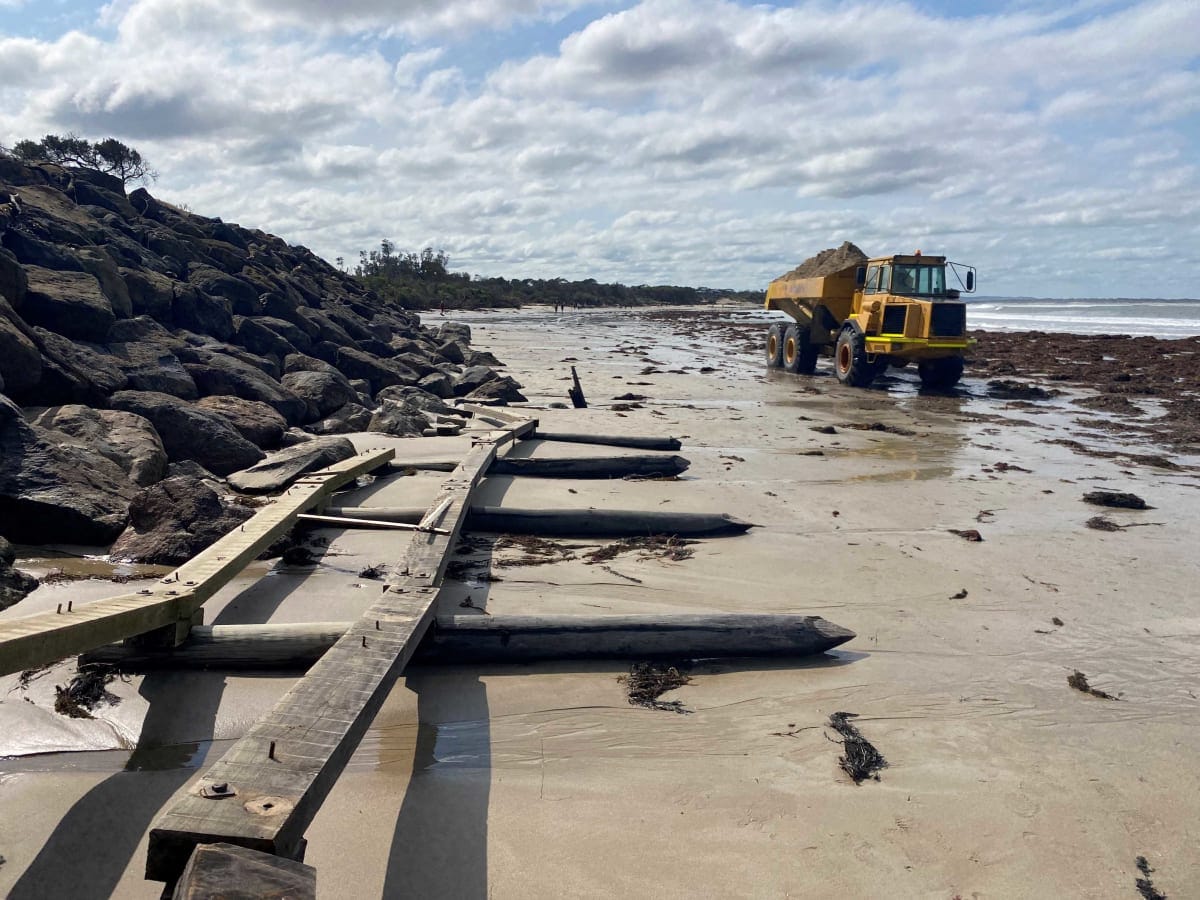Dune works but no ‘hard’ engineering at Inverloch
IN THE face of a massive movement of sand at Inverloch’s surf beach, as a result of the damaging week to 10 days of winds and tidal surges in August/September 2024, the Department of Energy, Environment and Climate Action (DEECA) has issued...

IN THE face of a massive movement of sand at Inverloch’s surf beach, as a result of the damaging week to 10 days of winds and tidal surges in August/September 2024, the Department of Energy, Environment and Climate Action (DEECA) has issued a works update.
They’ve also appealed to the community to provide input into the long-running Cape to Cape Resilience Plan process via survey or submission, closing on Sunday, September 22.
The release of the final report is not due out until mid-2025.
However, while the department says the draft plan and research done to date “is informing the present-day response from the Victorian Government”, only those options relating to “dune reconstruction and beach renourishment” are being acted upon, not any of the “hard” engineering options also outlined in the Cape report including reefs, dredging, groynes, breakwaters, flood/tidal barriers, drainage and road upgrades.
DEECA’s response
Here in full is the response from DEECA, dated Friday, September 13 headed “Cape to Cape Resilience Plan shaping coastal hazard response”:
The Cape to Cape Resilience Plan, currently open for public consultation, is informing the present day response from the Victorian Government in the face of coastal hazards such as tidal inundation and storm surges, as experienced recently on coastlines at Inverloch.
The Department of Energy, Environment and Climate Action (DEECA) will begin the process of dune reconstruction and beach renourishment at Inverloch, with $3.3 million funded by the Australian Government’s Coastal and Estuarine Risk Mitigation Program in 2022 for initial implementation actions. Coastal engineers are engaged and detailed design work for dune reconstruction is presently out for tender.
DEECA intends to undertake the renourishment work in 2025.
“The Cape to Cape Resilience Plan is currently out for public feedback and will inform how the local community respond to events such as these in the future,” said Darrin McKenzie, Regional Director DEECA Gippsland.
“It’s vital that communities between Cape Paterson to Cape Liptrap share their feedback now, as we plan for events of the future, not just those immediately in front of us.”
The Cape to Cape Resilience Plan is a draft coastal hazard adaptation plan, encompassing present day conditions, hazards, technical assessments and predicted changes such as rising sea levels, coastal flooding and the impact of erosion between Cape Paterson to Cape Liptrap in the decades to come.
DEECA is working with Bass Coast Shire Council, Department of Transport and Planning, Parks Victoria, Heritage Victoria and the West Gippsland Catchment Management Authority to respond to the erosion at Inverloch Surf Beach.
Bass Coast Shire Council (BCSC) and Department of Transport and Planning (DTP) have undertaken emergency renourishment works.
DEECA continues to actively monitor Inverloch Surf Beach through its Victorian Coastal Monitoring Program, and a post-storm drone survey was piloted on September 4.
Community and stakeholders are strongly encouraged to read the draft Plan and participate in the survey on Engage Victoria to provide their views and feedback. Submissions close 11:59pm on 22 September 2024 https://engage.vic.gov.au/cape-cape-resilience-project
For more information on the Cape to Cape Resilience Project, including detailed technical and strategic assessments that have informed the draft Plan, head to: https://www.marineandcoasts.vic.gov.au/coastal-programs/cape-to-cape-resilience-project






